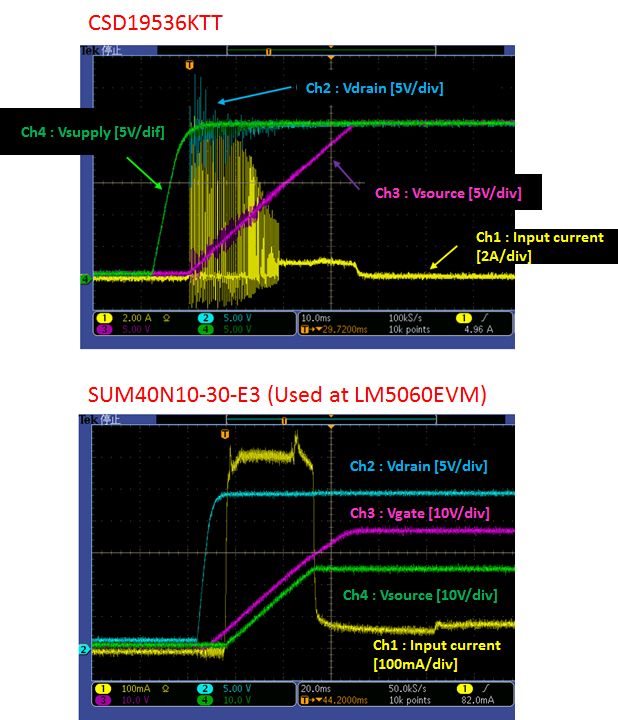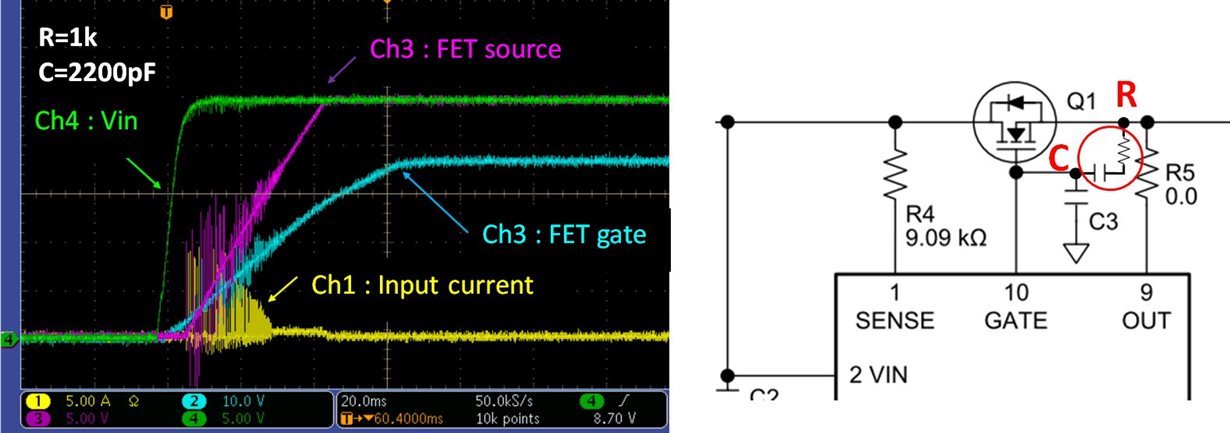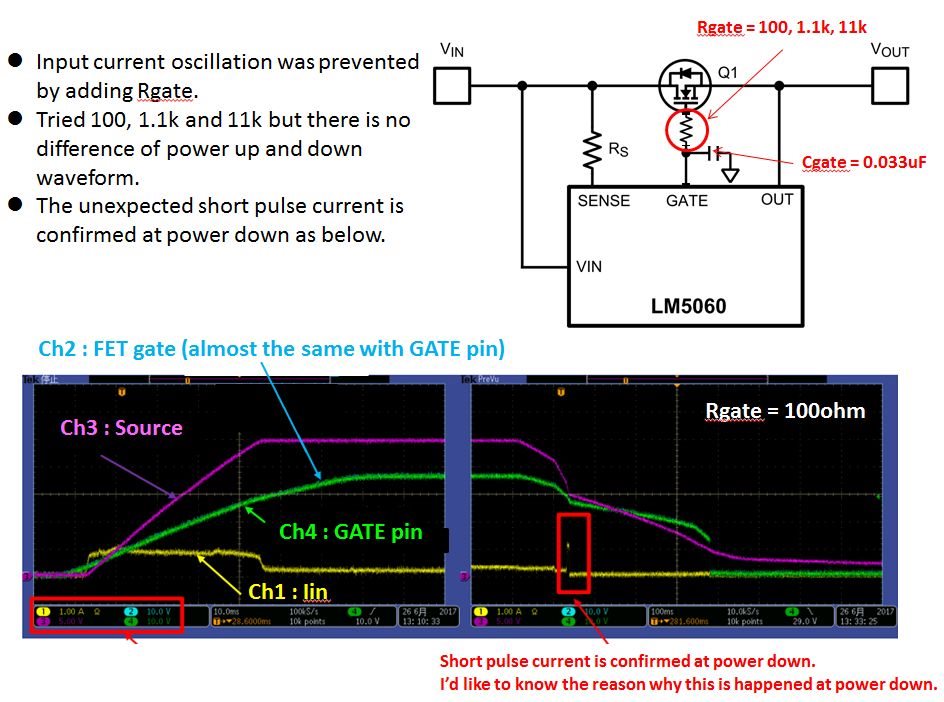Other Parts Discussed in Thread: CSD19536KTT, CSD19536, CSD19532KTT, CSD
Hi,
My customer is facing input current oscillation during start up on their test board. Now they are using TI's CSD19536KTT as external FET. They tried to replace it to SUM40N10-30-E3 that is used at LM5060EVM, and then this problem is fixed as attached. So it seems it needs to take care to choose external FET. Actually CSD19536KTT has larger Qg and smaller Rds(on) compared with SUM40N10-30-E3.
Please see attached waveform and give your opinion why this behavior is happened when CSD19536KTT is used.
Best Regards,
Satoshi / Japan Disty




